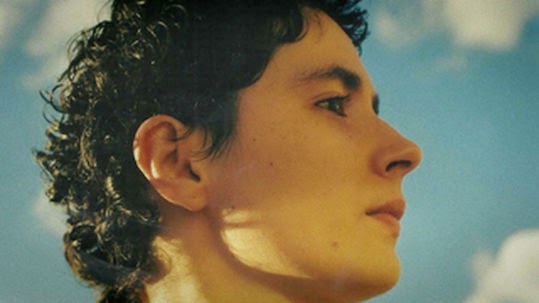 |
| View the full size poster (with screening details) here |
The Glasgow Film Festival begins this week (18th February - 1st March). Unfortunately I won't be going, but I thought I'd highlight a few of the Spanish-language films that'll be screening.
Two films I've seen:
10,000 Km (Carlos Marques-Marcet, 2014)
I reviewed this directorial debut last September (for Eye for Film - here) and it ended up in my list of favourites of the year. The film is a relationship drama in which the two leads (Natalia Tena and David Verdaguer) are kept apart for most of the narrative - communicating via various forms of telecommunications and social media - but they nonetheless successfully create and maintain a palpable emotional connection. It works because Marques-Marcet has the imagination and ingenuity to circumvent the limits of his low budget (and it is one of the few films I've seen to represent technology in a way that is both believable and immersive for the viewer), and both actors (the only people we see - the film could function as a stage play) deliver nuanced and engaging performances.
La Isla Mínima / Marshland (Alberto Rodríguez, 2014)
I watched this thriller on DVD at the end of last week and I'm disappointed that I won't get the chance to see it on the big screen because the recurring aerial shots of the unusual landscape make this a visually distinctive film (it also won 10 Goya awards just over a week ago - including Best Film, Director, and Leading Actor). In 1980, two detectives - Pedro (Raúl Arévalo) and Juan (Javier Gutiérrez) - are sent from Madrid to investigate the disappearance of two teenage sisters in the marshlands of Guadalquivir in southern Spain. This was a time of political transition in Spain and the two men effectively represent the old (Juan) and the new (Pedro), and the compromises that Spain would have to make in order to move towards democracy. That makes the film sound more schematic than it is, as Rodríguez is more interested in the grey areas of overlap than black and white demarcations, and he also keeps the crime story moving along at a cracking pace. I'll be writing something about it for the blog - it should be up within the next week.
Two films I'd like to see:
Relatos salvajes / Wild Tales (Damián Szifron, 2014)
An Argentinian-Spanish co-production (and I consider anything with El Deseo's name on it worth checking out), Wild Tales is a series of six short stories threaded together through the common theme of the worm that turns. I have yet to read a bad word about it (I'm talking general impressions - I've avoided reading details because the tales are apparently quite twisty), and most people who have seen it seem to want to see it again (and you can't get a much higher recommendation than that). It also has a top-notch case: Darín! Sbaraglia! Grandinetti!
Jauja (Lisandro Alonso, 2014)
Winner of the FIPRESCI Prize at last year's Cannes Film Festival, Jauja is the first of Alonso's films to be made with a screenwriting partner (Fabian Casas) and a professional cast (headed by Viggo Mortensen). The basic outline is that a 19th-century Danish military man (Mortensen) is searching for his runaway teenage daughter across the wilds of a South American landscape and goes on a metaphysical journey in the process. Again, I've avoided reading too many of the details about the film (Keyframe did a round-up of critics' opinions during Cannes and the New York Film Festival, should you wish to know more) but although critical reception was by no means unanimously positive, this is definitely one I'd like to catch up with.






















